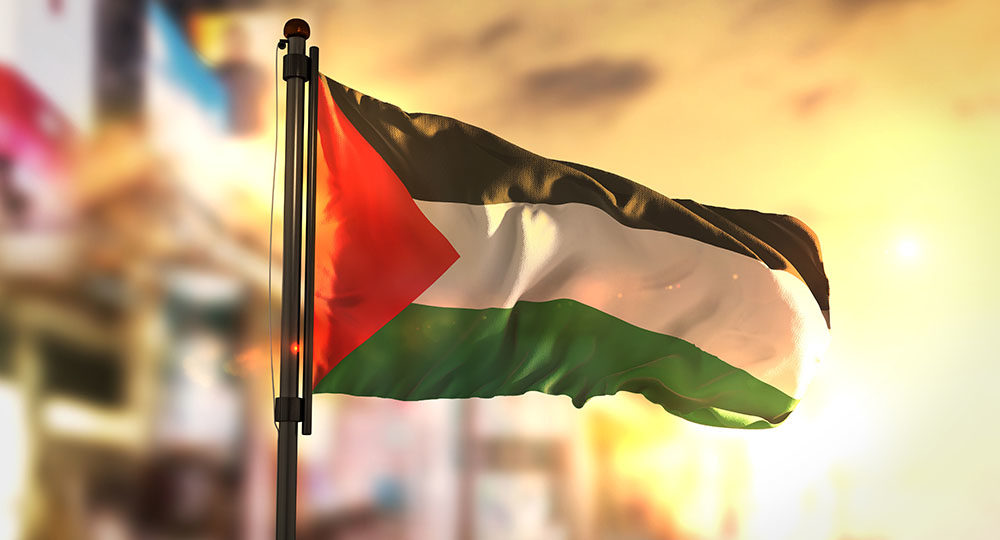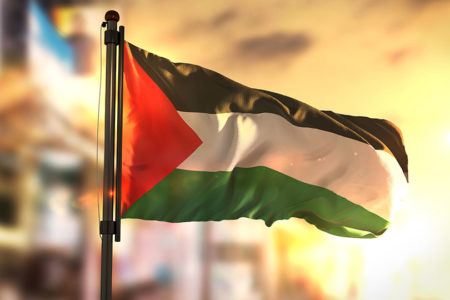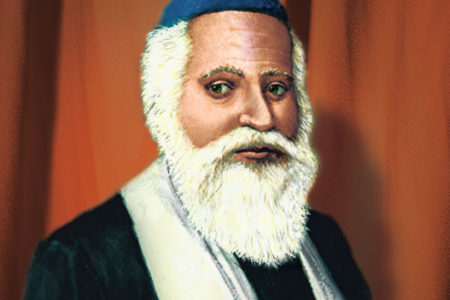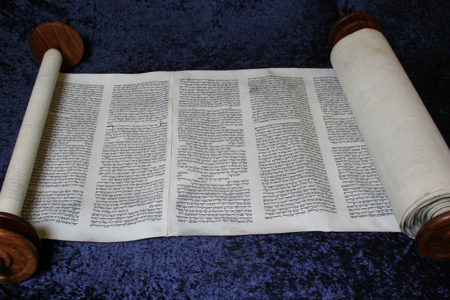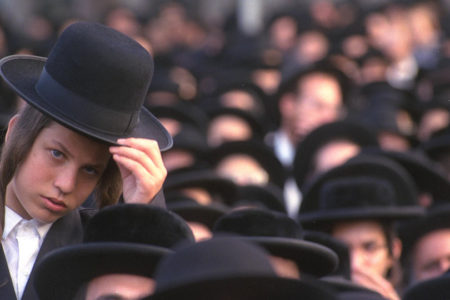What a Difference a Flag Makes
Character, in the long run, is the decisive factor in the life of an individual and of nations alike. —Theodore Roosevelt
America’s 26th president made a valid observation that stands in precise proximity to one in the Bible: “Blessed is the nation whose God is the Lᴏʀᴅ, the people He has chosen as His own inheritance” (Ps. 33:12).
When a reputable corporation seeks business partners or employees, it wants to know something about their character. And, though character often takes a back seat in the mad pursuit of money for money’s sake, it nevertheless remains the bottom line in determining how relationships will ultimately end. Alliances with people of questionable character spell trouble and, more often than not, bring catastrophe.
In the realm of nations, character can be tested based on respect, or lack of it, for holy places, whether or not those places happen to reflect a nation’s dominant beliefs. A vivid case in point is the Israeli-Palestinian struggle.
On December 21, 2001, the late Palestinian Authority (PA) Chairman Yasser Arafat made this statement:
One of our cubs or one of our flowers [a Palestinian boy or girl] will wave the flag of Palestine, Allah willing, over the walls of Jerusalem, its churches, and its mosques, whether someone likes it or not, and whoever does not like it can drink the water of the Dead Sea.1
Arafat also predicted, “I appeal to my beloved in Jerusalem: More determination, more strength, more resolve. And Allah willing, we will pray in the al-Aqsa Mosque and in the Church of the Holy Sepulchre.”2
Arafat’s flag-placing pronouncement has been repeated consistently by both his cohorts in the Palestinian Authority and his other terrorist allies; and it must not be taken lightly. It is a serious declaration of intent, with equally serious implications.
Arafat’s proclamation targets three elements: the walls of Jerusalem, the churches, and the mosques.
The Walls of Jerusalem
The phrase walls of Jerusalem alludes to everything in the Old City that is currently—historically or biblically—associated with Jerusalem’s Jewishness. As nonnegotiable slice of any peace agreement, the PA is demanding the entire Old City, which includes the Western Wall as well as the Jewish Quarter within the walls.
Synagogues, a word Palestinians seem loath to articulate, would fall under the jurisdiction of the Palestinian state. The question is whether Palestinian flags would be planted atop the synagogues or on piles of rubble where Jewish houses of worship once stood. Given the history of Arab Muslims and synagogues, the answer is obvious.
In 1939 the skyline of the Jewish Quarter of the Old City was dominated by two magnificent synagogues: the Hurva (Great Synagogue) and the Tiferet Israel house of worship. The Hurva had been built in the 16th century. It was later destroyed by the Ottoman Turks, then rebuilt in the 1850s. Hurva was reputed to be the largest, most majestic synagogue in the entire Middle East.
When the Jordanians captured the Old City in 1948, they systematically destroyed some 58 synagogues and Torah institutions, including the Hurva and Tiferet Israel. They also forced all Jewish people from their homes and forbade them entry into the Old City and access to the Western Wall. And so the situation remained until the Israelis took the city in June of 1967 during the Six-Day War.
Some may consider these atrocities ancient history, no longer applicable in this day of enlightenment. But such thinking is far from reality.
When Israel chose to withdraw unilaterally from the Gaza Strip and portions of northern Judea and Samaria last year, it also decided that its houses of worship should not be destroyed, as were most other structures. As a result, 21 synagogues were left intact, and the Palestinians promptly began waving flags over them.
Then the predictable happened. And even media outlets not known for being kind to Israel were forced to tell the story. Jason Maoz of The Jewish Press assembled a synopsis:
The Washington Post: “Before dawn, thousands of jubilant Palestinians poured into the settlement areas, celebrating and setting fire to some of the synagogue buildings.”
The (London) Guardian: “Palestinian police plans to bar crowds from the settlements quickly disintegrated as militant groups hoisted flags, fired into the air and set fire to abandoned synagogues.”
Los Angeles Times: “Palestinians surged triumphantly into demolished Jewish settlements in the Gaza Strip early today, torching empty synagogues and firing shots into the air.”
Associated Press: “Militant groups hoisted flags, fired wildly into the air and set abandoned synagogues ablaze.”3
No synagogues will be rebuilt in the Gaza Strip or northern Judea and Samaria. It is an ugly fact of life that Gaza is now, to use a familiar term from Europe of the 1930s and ’40s, Judenrein (“cleansed of Jews”).
When news of the wanton destruction of Jewish holy places got out, Israel’s former chief rabbi, Yisrael Meir Lau, issued a statement warning against retaliation directed at mosques: “It is not our way,” Lau said. “The country must do all it can to prevent any irresponsible actions that could spark off hatred and cause bloodshed and suffering.”4
The difference, as Theodore Roosevelt so aptly put it, is a matter of national and individual character.
The Churches of Jerusalem
The future of churches located within the ethnically cleansed borders of Palestinian territory is an issue the secular media and Western politicians shroud with silence. Unfortunately, it is also one seldom raised in Christian circles outside the region. However, the Palestinians intend for churches to fall under their regime’s control.
In case you missed it, here is what Arafat said: “Allah willing, we will pray…in the Church of the Holy Sepulchre.”
Was this a slip of the tongue? Based on an abundance of empirical evidence, it was a statement of intent; and one need only remember events in Bethlehem to confirm this commitment.
Bible and prophecy teacher Zola Levitt, commenting on events related to the Palestinian takeover of Bethlehem in 1995, sketched a bleak scenario of present and future events:
But in a peculiar way, it was not only the city [Bethlehem] that was given to the Moslems, but also the Savior who was born there. Yasser Arafat proclaimed Jesus to be a Palestinian in front of the whole world, and the Moslems, the media and, most shamefully, the Christian church, scarcely objected.5
Before his death, Arafat effectively completed the Islamization of Bethlehem and the adjacent Arab-Christian villages of Beit Jalla and Beth Sakhur, once Christian enclaves in Judea and Samaria. He changed the area demographically, cleverly flooding it with Muslims by (1) redrawing boundaries to encompass 30,000 Muslims from three refugee camps, (2) encouraging Muslim immigration to Bethlehem from Hebron, and (3) persecuting Christians so that they would leave. Ironically, more Arab Christians from Beit Jalla reside in Belize, Central America, today than in Beit Jalla itself.6
A consequence of the de-Christianizing of Bethlehem was the terrorist occupation of the Church of the Nativity on April 2, 2002. Fleeing from Israel Defense Forces (IDF) soldiers who were searching for weapons, more than 150 Palestinian terrorists from various organizations shot the doors off the church and rushed the building and nearby monastery where more than 200 priests and nuns lived. For 38 days they holed up on the premises, while Israelis, respecting the sanctity of the historic church, refused to enter.
Rather than urge the terrorists to surrender, Arafat charged the Israelis with committing an “atrocious crime” that “cannot be forgiven.” In the end, most of the terrorists received safe passage to Europe. Twenty-six of them, guilty of serious crimes, were taken to Gaza for trial. On their arrival they were greeted with a celebration and hailed as heroes. It was left to the IDF and outraged church clerics to clean up the debris.
Among the items the terrorists left behind were 40 explosive devices, garbage, and human excrement. One of the monks complained that the Palestinians ransacked the rooms one by one and stole everything of value, including crosses and prayer books. Several monks reported being beaten.
Ralph Peters, a retired U.S. military officer, wrote in the May 3, 2002, edition of the New York Post, “The war crime—committed brazenly before a global audience—is the occupation of the Church of the Nativity, in Bethlehem, by Palestinian terrorists….The immediate and well-organized occupation of one of Christianity’s holiest shrines was an illegal, cynical gambit.”7
Not only was the occupation of a holy place a clear violation of the Geneva Convention, but the fact that the perpetrators got away with it without provoking international condemnation and outrage provides a tacit license for more of the same.
After all, this wasn’t the first time Muslims seized a church while the world remained silent. Two years earlier terrorists commandeered churches and Christian homes in the Arab-Christian village of Beit Jalla and used them to set up firing stations to attack Jewish residences and schools in the Jerusalem neighborhood of Gilo.
The Mosques of Jerusalem
The third recipient of the Palestinian flag is to be the Muslim mosques of Jerusalem and, for that matter, the whole of “Palestine.” Little need be said on the subject because it is a foregone conclusion that wherever Islam is in control, Muslim mosques are destined for predominance. That fact was evident during the heated, five-year dispute over the construction of a mosque near the Church of the Annunciation in Nazareth.
Muslims seized the property where a tourist plaza was to be built to celebrate 2,000 years of Christianity in Nazareth. They then demanded the property be deeded to the Islamic authorities for a mosque. Opponents argued that the spires of the proposed mosque would tower over the church and demean the basilica. Israel, under pressure, decided in 2002 to withdraw approval to build on the site.
What may seem a trivial incident illustrates a fundamental point: A tenet of Islam is that no Christian, Jewish, or other religious building be taller than Muslim sanctuaries. The issue is simple but revealing. Islam must dominate the landscape, indicating superiority over infidel religious pretenders.
How extreme can the situation become? Consider Saudi Arabia, where extreme Wahhabism rules the day. There are no churches or synagogues. As a matter of fact, Jewish people are not allowed in the country; and, among other things, Christians are not allowed any outward evidences of their faith. Here is what Daniel Pipes reported:
In November 1990, President George H. W. Bush went to the Persian Gulf region with his wife and top congressional leaders at Thanksgiving time to visit the 400,000 troops gathered in Saudi Arabia, whom he sent there to protect that country from an Iraqi invasion. When the Saudi authorities learned that the President intended to say grace before a festive Thanks -giving dinner, they remonstrated; Saudi Arabia knows only one religion, they said, and that is Islam. Bush acceded, and he and his entourage instead celebrated the holiday on the U.S.S. Durham, an amphibious cargo ship sitting in international waters.8
So, what difference does a flag make? All the difference in the world! It’s a matter of character.
ENDNOTES
- The Middle East Media Research Institute (Memri), “Recent Statements by Yasser Arafat,” Special Dispatch Series–No. 317, December 20, 2001 <http://memri.org/bin/articles.cgi?Page=subjects& Area=conflict&ID=SP31701>.
- Ibid.
- Jason Maoz, “NY Times Puts Out Gaza Fires,” September 14, 2005 <www.thejewishpress.com/news_article.asp?article=5397>.
- Guy Leshem, “Palestinians Destroy Synagogues in Gaza,” September 16, 2005 <www.forward.com/main /printer-friendly.php?id=3963>.
- Zola Levitt, The Levitt Letter 18, no. 2 (1996) <www.levitt.com/newsletters/1996-02.html>.
- Yoram Ettinger, “The Islamization of Bethlehem by Arafat,” The Jerusalem Cloakroom 117, December 25, 2001 <www.acpr.org.il/cloakrm/clk117.html>.
- Ralph Peters, “The Real War Crime,” New York Post, May 3, 2002 <www.aijac.org.au/updates/May-02/080502.html>.
- Daniel Pipes, “The Scandal of U.S.–Saudi Relations” <www.danielpipes.org/article/995>.
